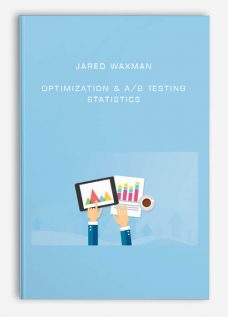Build And Sell APIs – Establish A New Income Stream
$9.00
- Description
Description
Build And Sell APIs – Establish A New Income Stream
Table of Contents
In today’s interconnected digital world, the demand for seamless integration between different software systems is higher than ever. This is where Application Programming Interfaces (APIs) come into play. APIs serve as intermediaries that enable different applications and platforms to communicate with one another, allowing developers to access and utilize each other’s functionalities. But did you know that building and selling APIs can be a lucrative business opportunity?
The API economy has been steadily growing over the past decade, transforming the way businesses operate and creating new avenues for revenue generation. Companies across various industries are recognizing the value of offering their services or data through APIs, as they provide developers with ready-made tools to build innovative solutions that solve real-world problems.
So why should you consider diving into this burgeoning market? The answer lies in the vast potential for earning passive income by leveraging your programming skills to create valuable APIs. Imagine being able to monetize your expertise beyond traditional client projects – selling or licensing your own API can open up an entirely new income stream with limitless possibilities.
If you are a web developer, software engineer, entrepreneur looking to start a tech venture, or a business owner searching for ways to diversify your revenue streams, this article will guide you on how to masterfully build and sell APIs while exploring effective strategies for monetization. Get ready to tap into the power of API-driven revenue generation!
Understanding API Monetization Strategies
There are various ways that companies can monetize their APIs, each with its own advantages and disadvantages. One common strategy is usage-based fees, where businesses charge a fee based on the number of API calls made by developers or customers. This model allows for scalability and flexibility, as companies can adjust their pricing based on demand. However, it also means that revenue is dependent on usage, so there may be fluctuations in income.
Another popular approach is a subscription model, where developers or businesses pay a recurring fee to access and use an API. This provides more predictable revenue streams, making it easier for companies to plan and budget accordingly. Additionally, subscriptions can offer tiered pricing plans with different levels of features or support to cater to various customer needs.
While both these strategies have their benefits, they also come with some drawbacks. Usage-based fees can make it difficult for customers to estimate costs upfront and might lead them to seek alternatives if prices become unpredictable. On the other hand, subscription models require ongoing investment in maintaining and improving the API’s functionality to retain subscribers.
Ultimately, selecting the most suitable strategy will depend on factors like target market dynamics and competitive analysis. By understanding these different approaches to API monetization, businesses can make informed decisions when building APIs for sale or licensing.
Identifying Opportunities In Your Niche – Researching Industry Trends & Demands
To build and sell APIs successfully, it is crucial to identify the right opportunities in your niche. One way to do this is by researching industry trends and demands. Keeping up with the latest advancements in technology and understanding how businesses within your niche are using APIs can help you gain valuable insights into what types of APIs are in high demand.
Start by examining market research reports, attending industry conferences or webinars, and networking with professionals who work in related fields. By staying informed about emerging technologies and market trends, you can position yourself to create APIs that meet current and future needs.
Assessing market needs & gaps
In addition to studying industry trends, another important step is assessing the specific needs and gaps within your target market. Ask yourself: What challenges do businesses face? Are there any existing solutions that fall short or have room for improvement?
Surveys, interviews with potential customers or stakeholders, and competitor analysis can provide invaluable information on areas where there’s a lack of well-designed APIs or where existing solutions are too expensive or complex.
By identifying these gaps in the market, you can tailor your API development efforts towards creating solutions that address real pain points. This proactive approach will not only increase your chances of building an API that sells but also helps establish yourself as a trusted provider within your niche.
Remember, successful API monetization starts with thorough research into both industry-wide trends and specific market needs. These insights will guide you as you develop unique API offerings tailored to meet demand while differentiating yourself from competitors operating solely on guesswork or outdated assumptions
Building High-Quality APIs
When it comes to building high-quality APIs, there are several best practices that developers should follow to ensure they meet the needs of their users. One key aspect is designing robust RESTful or GraphQL APIs that provide efficient and intuitive ways for clients to interact with the data and functionality offered by the API. RESTful APIs use HTTP methods like GET, POST, PUT, and DELETE to perform actions on resources, while GraphQL provides a flexible query language for fetching precisely what’s needed.
To design robust RESTful or GraphQL APIs, developers should focus on creating clear and meaningful endpoint URLs that accurately represent the desired action. This helps users understand how to interact with different resources provided by the API. Additionally, using appropriate HTTP status codes can improve error handling and make troubleshooting easier for clients.
Another crucial element in building high-quality APIs is creating documentation standards that effectively communicate how to use the API’s endpoints and available functionalities. Documentation should be comprehensive yet concise so that users can easily understand how to integrate with your API without having to reach out for support constantly. Providing code examples along with explanations can greatly assist developers who are unfamiliar with your API.
By adhering to best practices for building robust RESTful or GraphQL APIs and implementing thorough documentation standards, you will not only create a valuable product but also enhance user experience, attract potential buyers/users of your API when selling/licensing it later on.
Adding Value Through Features & Integration Options
To truly make your API stand out and attract potential buyers, it’s crucial to go beyond the basic functionality and offer additional features that add value. By enhancing your API with advanced capabilities or unique functionalities, you can differentiate yourself from competitors and entice customers to choose your API over others.
Consider adding features like data analytics, reporting tools, authentication mechanisms, or real-time notifications. These value-added features can significantly enhance the usability of your API and provide businesses with valuable insights or added convenience.
Furthermore, integrating third-party services into your API ecosystem can further expand its capabilities and appeal. By allowing easy integration with popular platforms or software systems commonly used by businesses, you increase the relevance and versatility of your API offering. For example, if you’re building an e-commerce API, consider integrating with popular payment gateways like PayPal or Stripe to simplify the transaction process for users.
By continuously exploring ways to improve and innovate upon existing offerings, you set yourself apart in a competitive market while simultaneously delivering more value to potential customers. This approach not only increases the attractiveness of your product but also enhances customer satisfaction levels. The key is to stay abreast of industry trends and requirements so that you can anticipate what future users will need within their workflows—and be prepared to deliver on these expectations.
Pricing Models & Licensing Options: Unlocking The Value Of Your APIs
When it comes to monetizing your APIs, selecting the right pricing model and licensing option is crucial. This decision will determine how you generate revenue from your API and what kind of access you provide to potential customers. There are various pricing models available in the market, each with its own advantages and considerations based on usage types.
One popular pricing model is the freemium model, where you offer a basic version of your API for free while charging for additional features or higher usage levels. This approach allows developers to get started with your API at no cost, encouraging them to explore its capabilities and potentially upgrade to a paid plan as their needs grow. On the other hand, tiered pricing involves offering different pricing tiers based on usage limits or specific features. This strategy provides flexibility for customers who have varying requirements while giving them options that align with their budgets.
When considering licensing options, one path is open-source licensing. By releasing an open-source API, you foster a community of developers who can contribute enhancements and bug fixes. While this may mean not directly charging for licenses, it creates opportunities for add-on services such as support contracts or custom development work derived from the open-source codebase. Alternatively, choosing proprietary licensing allows you to retain full control over your API’s distribution and sets the terms under which others can use it. This gives you more straightforward avenues for selling licenses outright or setting up subscription-based agreements.
As you evaluate both your target audience’s preferences and your own business goals, remember that there isn’t a one-size-fits-all solution when selecting pricing models or licensing options—each has its own benefits depending on what you’re looking to achieve with your APIs’ commercialization endeavors.
Selling And Promoting Your APIs: Marketing Strategies For Attracting Potential Buyers
Once you have built your API, the next step is to effectively sell and promote it to attract potential buyers. This requires adopting strategic marketing approaches tailored to the specific needs of developers and businesses seeking APIs. One effective strategy is leveraging API marketplaces, which serve as a centralized platform connecting API providers with potential customers. By listing your API on these marketplaces, you can significantly increase its visibility and reach a wider audience.
In addition to using API marketplaces, engaging with developer communities can be an excellent way to promote your APIs. Many developers rely on online community forums such as Stack Overflow or Reddit for information and support related to programming. Actively participating in these communities by answering questions and sharing relevant resources can establish you as an expert in your field while showcasing the value of your API.
Furthermore, forming partnerships with other businesses or platforms that align with your target audience can help create mutual benefits. For example, if you have built an API specifically for e-commerce solutions, partnering with popular e-commerce platforms could expose your offering to their existing user base while providing them with added functionality through integration.
By implementing these marketing strategies – utilizing API marketplaces, engaging developer communities, and forming partnerships – you can enhance the visibility of your APIs among prospective buyers while positioning yourself as a reliable provider in the industry. With increased exposure comes greater opportunities for selling and monetizing your APIs effectively.
Measuring Success And Iterating
Tracking API usage and performance metrics is crucial in determining the success of your API and identifying areas for improvement. By monitoring the number of requests, latency, error rates, and other key performance indicators (KPIs), you can gain valuable insights into how your API is being utilized.
One effective way to track API usage is by implementing analytics tools or integrating with existing analytics platforms. These tools can provide detailed reports on various aspects of the API’s usage, such as the number of active users, popular endpoints, peak request times, and more. This data allows you to understand patterns and trends in user behavior so that you can optimize your API’s performance accordingly.
In addition to tracking metrics, collecting user feedback is essential for iterating on your offering. Engage with developers who are using your API through forums or support channels to gather their input. Understand their pain points or suggestions for improvement which can help shape iterative updates on features or functionality.
Implementing a system for gathering feedback ensures that you stay connected with your users’ needs while continuously enhancing their experience with the product. Regularly communicate updates or improvements based on user feedback to demonstrate responsiveness to customer concerns.
Remember that iteration should be an ongoing process as technology evolves rapidly. By actively analyzing metrics and incorporating user feedback into product development cycles, you not only improve satisfaction levels but also increase chances for long-term success in building/API monetization endeavors.
Case Studies & Success Stories
To truly understand the potential income opportunities that come with building and selling APIs, let’s take a look at some real-life examples of companies who have successfully monetized their APIs.
One prime example is Stripe, a leading payment processing platform. Stripe offers a robust set of APIs that developers can use to integrate secure online payments into their applications. By providing this valuable service through an easy-to-use API, Stripe has positioned itself as the go-to solution for businesses looking to accept payments online. This has allowed them to generate significant revenue by charging fees on each transaction made through their platform.
Another success story comes from Twilio, a cloud communications platform. Twilio provides APIs for integrating voice and messaging capabilities into applications and services. By making it simple for developers to add voice calls or text messaging to their software solutions with just a few lines of code, Twilio has attracted numerous customers and built strong relationships with businesses looking to enhance their communication capabilities. This has resulted in substantial revenue growth for the company.
These case studies demonstrate how building and selling APIs can lead to financial success if you offer value-added services that address specific needs within various industries. As you embark on your journey towards creating your own API-based income stream, these success stories should inspire you to think creatively about the unique offerings you can provide and how they can drive revenue generation opportunities for your business.
Sales Page: Download Files Size: 1.21 GB














